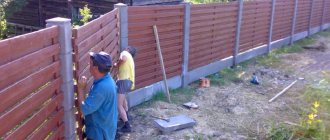Laws and regulations
All regulatory documentation is developed taking into account many years of experience in operation, production, construction and primarily serves to ensure the safety of life and health of citizens, and the safety of their property, as well as regulation of legal relations of citizens. This also applies to the location of buildings on the site, which is also regulated by regulatory documentation.
Pexels Photos
There are also land use rules (LRU), developed by local government bodies to which the construction site belongs. PZZ determine the distances between buildings, the size of the plots, the permissible number of storeys and the height of the construction of the house.
The prescribed requirements can be mandatory (mandatory compliance with these standards is required), as well as advisory - optional, these can be previously canceled mandatory standards, so they should not be neglected either.
Where to begin?
To locate buildings on a site, the first step is to determine the physical boundaries of the site. Please note that errors may have been made during surveying. To be completely sure of the boundaries of the site, you can order a cadastral geodetic survey.
In the Town Planning Code of the Russian Federation there is such a definition as the “red line” - that is, the building line that defines the boundaries of your land plot. Although this is a conditional feature, compliance must be accurate to the centimeter. For example, if you put a gate on the line itself, then it should open exclusively inward.
The red line can be designed or existing. The draft does not have legal force and speaks rather of your intentions, while the existing one has already been agreed upon and has entered into force. After the boundaries are marked on the site plan, you can think about the location of the log house, bathhouse and other wooden buildings.
How to locate a residential building on a plot?
The location of a residential building is regulated by the following regulatory documents:
- PZZ of local government (it is necessary to clarify the distances at the location of the construction site),
- SP 42.13330.2016
- SP 53.13330.2011, SP 30-102-99
According to these documents, a residential building on the site can only be located in compliance with the following requirements:
- The distance from the neighbor's fence is at least 3 meters. In this case, the fence must be located on the border of the site (interface).
- The distance from the red line of the street is at least 5 meters. Most often this means 5 meters from the boundary of the property line on the street side.
- The distance from the red line of passages is at least 3 meters.
- The roof must be organized in such a way that it is impossible for snow to melt or water from rain to drain from the roof of any building onto a neighbor’s property.
- Compliance with fire safety distances between buildings is mandatory.
It is also recommended to comply with the rules for the location of the house in relation to green spaces, because gradually the roots of trees and shrubs grow, which can damage the foundation, in addition, leaves, branches, etc. fall from the trees.
Settlement of buildings and structures from the fence of their site
The set of rules 53.13330.2019 specifies the distance from all buildings to the fence located on a summer cottage, as well as a garden area in SNT. Similar standards for ownership as individual housing construction are specified in SP 30-102-99.
Fence between summer cottages
Outbuildings, outbuildings, engineering structures
The regulations regarding the setback of outbuildings in relation to the fence are scattered throughout all documents. Therefore, for clarity, information for garden plots in SNT and individual housing construction buildings is summarized in the table below.
How to arrange the bathhouse?
A bathhouse is an outbuilding, therefore the following mandatory requirements apply to its location on the site:
- The distance from the red line of the road is at least 5 meters.
- The distance from the windows of residential premises (rooms, kitchens, verandas) located in neighboring areas is at least 6 meters.
- The distance from the neighbor's fence is at least 1 meter.
- Just as in the case of a house, it is unacceptable to locate the building in such a way that it would be possible for snow to melt or water from rain to drain from the roof of any building onto a neighbor’s property.
- Mandatory compliance with fire distances between buildings is required
The following requirement is set as a recommendation: the distance from your residential building is at least 8 meters.
Distance to neighbors
The minimum distance between two residential buildings is specified in the fire safety standards of the Russian Federation. Not only the safe distance is taken into account, but also the materials from which the structures are built. For example, there must be at least 15 meters between residential wooden buildings. Between concrete, stone or brick - 6 m. If the houses are built from a combined material, they can be located eight meters from each other.
Whether it is realistic to comply with these requirements if the size of the plot is no more than 10 acres is a completely different question. In order to avoid problems with regulatory inspections, site owners resort to some tricks. For example, they strive to build a house before their neighbor. In this case, the owner of the land can place the house at a minimum distance from the neighbor’s fence, that is, three meters. In this case, the second owner will have to take into account the materials used in construction and “move aside” his house on the plan to comply with building codes.
The second trick is to approve a plan for the placement of buildings on the site. A citizen who owns land with an area of 5-6 acres can draw up a plan, trying to fulfill all the requirements as much as possible. The document must be taken to the local administration and told about the impossibility of complying with all standards due to the size of the site. If the authorities cooperate, the owner will not have problems with the law or neighbors in the future.
Garage location
The requirements are the same as for most outbuildings. The distance should be:
- at least 1 meter from the neighbor’s fence;
- at least 6 meters from the windows of residential premises (rooms, kitchens, verandas) located in neighboring areas to the walls of the garage.
You cannot build a garage so that snow or rainwater drains onto a neighbor’s property. If agreed upon, leaving the garage can be done at the border of the property. A mandatory requirement is to maintain fire safety distances between buildings.
Alexey Sharov, head of the Istrinskaya Dolina sales department, answers:
First, you need to determine the boundaries of your site - order cadastral work.
According to the boundary plan, you can install a fence, not forgetting about building codes and regulations. We must not forget about the requirements that may be established by local authorities or the board of your association. It is very important to pay attention to the fact that there is a distance of at least 1 meter between any part of the solid fence structure and the border. In this case, it is better to build a fence between neighboring plots, moving away at least 3 meters from the residential building. We built a house close to the fence - what to do now?
Do I have to get permission to add an extension to my house?
In order to avoid troubles in the future, it is better, before installing a fence, to obtain consent from neighbors for its installation and permission from the municipality or the board of your gardening partnership.
Distances from boundary
The fence is the boundary of your site, but this does not mean that you can place buildings and plantings in the interior space without restrictions. Tree crowns should not block sidewalks or overhang the neighboring area unnecessarily; sounds and smells of residential and commercial buildings should not disturb passers-by and neighbors. The distances to the fence between plots can be changed by agreement with the neighbors, certified by a notary.
Minimum normalized distances from the boundary between areas to objects:
- residential building - 3 m;
- poultry house, barn, pigsty, etc. — 4 m;
- greenhouse with fertilizing with organic fertilizers - 4 m;
- garage, barn - 1 m (but water drainage from the roof cannot be organized on the neighboring site - the roof slope is oriented towards your site);
- bathhouse, sauna, shower, toilet - 2.5 m;
- tall trees - 4m;
- medium-sized trees - 2 m;
- bushes - 1 m.
Sanitary requirements for site planning
When planning a site, sanitary standards should be given special attention, because they are aimed at preserving people’s health. SNiP 30–02–97 gives the minimum distances that must be maintained between buildings for sanitary reasons (clause 6.8).
- house and cellar - more than 12 m from the toilet, poultry house, barn for small livestock;
- house and cellar - more than 8 m from shower, sauna, bathhouse;
- well - more than 8 m from the toilet, compost heap, septic tank.
When planning construction, make sure that these distances are respected in relation to buildings in adjacent areas.
What to consider
The development of owned land has certain nuances that are taken into account in separate official documents. It is these standards that are taken into account by both local authorities and courts in the event of dissatisfaction with neighbors and their filing of lawsuits.
Garage on site
For housing construction on an individual housing construction site, a set of rules SP 11-106-97 is provided; this is a document regulating the planning and construction in the private sector. For the correct placement of buildings at the dacha there is SNiP 30-02-97 as amended in 2021 and SP 53.13330.2011.
The need for its adoption is dictated by the relatively small sizes of plots, where instructions on what the removal of buildings should be is determined for typical sizes of at least six acres. The construction standards provided for in these regulatory documents dictate the need to comply with the permitted minimum for summer cottages and private houses.
When determining what distance is required, they focus on sanitary and fire standards, compliance with the legal rights of not only the owner of a given site, but also people living in neighboring areas.
SNiP standards for SNT and individual housing construction
The fundamental development rules define the following indicators:
- the location of the house on a summer cottage or on an allotment in gardening partnerships, dictated by the area of land ownership;
- the required distances between the fence and any type of building, from a residential building and outbuildings to a bathhouse and toilet;
- removal between residential buildings on parallel land ownership, as well as between a house and a fence on your own;
- minimum distances between buildings on your site and standards for distance from neighboring buildings.
Among the parameters that are regulated by these standards is the height of the fence (it can be different on the front side and on the border of adjoining plots). The distance between residential buildings and the fence, between outbuildings and the fence fall under the category of “fire distances and sanitary and hygienic standards.”
Standards according to SanPiN
You should be concerned about carrying out the planned construction and start with it only after the demarcation has been carried out. To do this, you need to contact the cadastral agency, whose employees will draw the boundaries between neighbors according to the law.
Only after this can a development plan be drawn up, which certainly takes into account:
- Required distance between different types of buildings on the site.
- The distance from the fence provided for by the standards.
- A specified distance between your own buildings and those of your neighbors.
Since it is difficult for a person who has not previously dealt with such planning to take into account all the components at once, they contact the appropriate institution for approval of the plan.
They allow construction to begin if the scheme complies with all existing rules. If there is a discrepancy, adjustments are made, which are much easier to do on paper than in ready-made structures.
Distances between plots in the country
Fire safety rules for placing wooden houses
According to clause 4.7 of SNiP 30–02–97, the distances between buildings within your site are not standardized for fire safety reasons. The distances that prevent the spread of fire between buildings in adjacent areas depend on the building materials that form the basis of the house, garage or utility unit and are taken according to the table from SNiP. The table should be used in this way: A, B and C - flammability classes of materials. Vertically - data about the building on your site, horizontally - on the neighboring one. For example, your house is wooden, your neighbors’ house is stone. At the intersection point of B (vertically) and A (horizontally), we find the distance - 10.0 m.
| Material of load-bearing and enclosing structures of the building | Distances, m | ||
| A | B | IN | |
| A Stone, concrete, reinforced concrete and other non-combustible materials | 6 | 8 | 10 |
| B The same, with wooden floors and coverings protected by non-combustible and difficult to combustible materials | 8 | 10 | 12 |
| B Wood, frame enclosing structures made of non-combustible, difficult to combustible and combustible materials | 10 | 12 | 15 |
Fire distance between residential buildings: how to determine
As practice has shown, the law of life “We wanted the best, but it turned out as always” regarding fire safety standards was 100% effective. If anyone does not understand, then we are talking about fire distances between private residential buildings and how to determine them .
And to make it clear what will be discussed now, I’ll tell you a “fairy tale”: Once upon a time, there lived first in the Soviet Union, and then in Russia, SNiPs - Construction Norms and Rules, to which ALL designers and developers were subject to. SNiPs had a certain division (honed by time and experience in their use), which allowed the above-mentioned categories of citizens (designers and builders) to easily find the necessary points. But the fire safety standards were scattered across several SNiPs (which, however, did not prevent the fire service employees from navigating them, as well as advising everyone on these issues for FREE).
Several years ago, “one smart head,” who probably did not understand anything about SNiPs and looked at them as strange animals, came up with the idea of carrying out another reform and creating Technical Regulations instead of SNiPs. The idea quickly found allies, received approval in high circles and... slowly began to clean up the mess (there is no other way to put it). After some time, the “Technical Regulations on Fire Safety Requirements” were born in the form of a Federal Law. But upon careful study, it turned out that a lot of necessary fire safety standards had disappeared from “use.” Fire inspectors grabbed their heads - you can’t joke with fire, but amending the Federal Law is very difficult and very, very long (it’s like tattoos on your fingers - at first it’s cool, and then you can’t fix it if you don’t like it). Then, following the Technical Regulations, Codes of Rules were born (the same SNiPs, but united by successive “craftsmen” into new books and again losing some of the norms). As a result, confusion began, including regarding fire safety distances between private houses, which led to legal disputes. After all, the norm that previously “lived” in SNiP “Urban Planning...”, which allowed not to take into account fire distances between individual buildings within one building block if certain requirements were met, has GONE and has never returned to either the Technical Regulations or the joint venture.
And since the Technical Regulations do not stipulate fire safety distances between private houses in any way, in their definition we now have to rely on SP (Code of Rules) 4.13130.2013 “Fire protection systems. Limiting the spread of fire at protection facilities. Requirements for space-planning and design solutions.”
Well, what about SNiPs? And they will also be used now by the Ministry of Emergency Situations and by judges, since there is still no direct ban on their use. Although the Building Codes and Rules are not normative legal acts, this conclusion is confirmed by the Ruling of the Supreme Court of the Russian Federation of November 16, 2000 N GKPI 2000-1356.
Therefore, a reasonable question arises: how can we currently correctly determine the required fire safety distance between residential buildings (private individual)?
Let's take a look at SP 4.13130.2013:
….
This is the basic norm that allows you to answer the question of how to determine the fire distance between residential buildings when it comes to individual houses. But in order to select the distance value you need from the table, you need to know the degree of fire resistance of the building and the class of structural fire hazard. Only an examination can accurately determine these values (it is always paid). Approximately - give a consultation to a fire inspector (free of charge).
However, the fire distances can be INCREASED:
But what to do if the “norm” exceeds the distance that you actually have between two residential private houses ? That's right, look for loopholes. Therefore, let’s scroll through the SP further:
If two private houses belong to the fire resistance degree from first to third, then these standards should be followed:
First, you should understand that if you are going to build, for example, a wooden house (that is, the fire resistance level of your house is fourth or fifth), then you should be guided by Table 1, and not clause 5.3.2 of this SP.
Environmental building standards
Based on measures to prevent fires and to preserve nature, the building boundary should be further than 15.0 m from the border of forest areas.
Rules for the conservation of water resources, if they are located near your site, are regulated by the Water Code of the Russian Federation. This applies primarily to the rules for water supply and sanitation. In addition, restrictions apply to the use of the coastline for walking animals, recreation, dumping earth, compost facilities, and plowing. The possibilities for using fertilizers on your site are limited. You cannot fence off even a small area for a beach or a boat/fishing bridge - the entire coastline up to a width of 20.0 m is state property.










